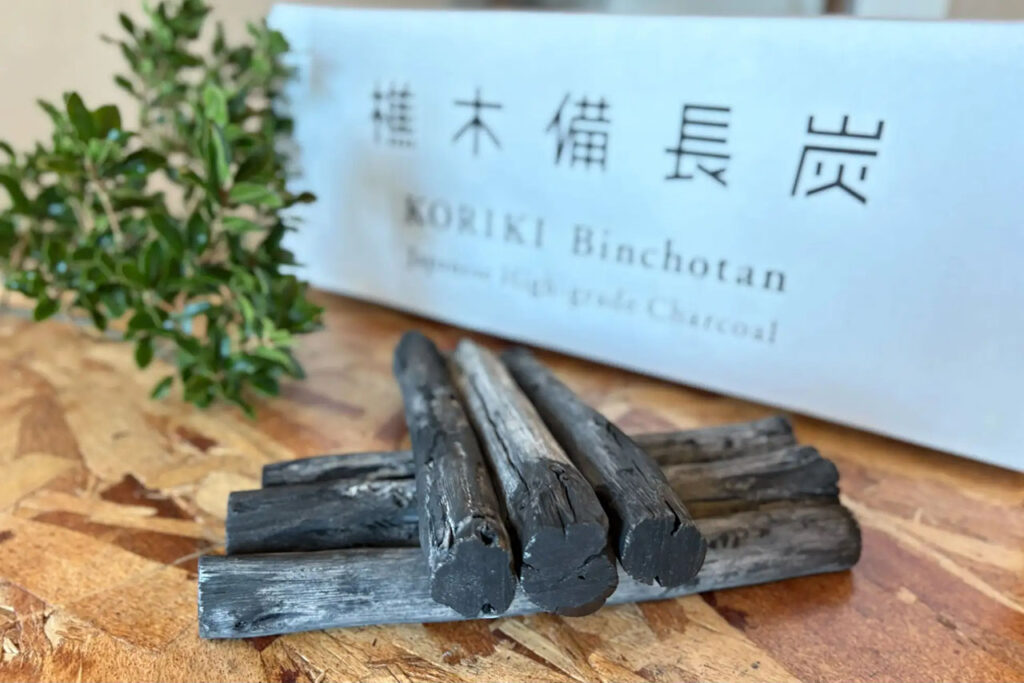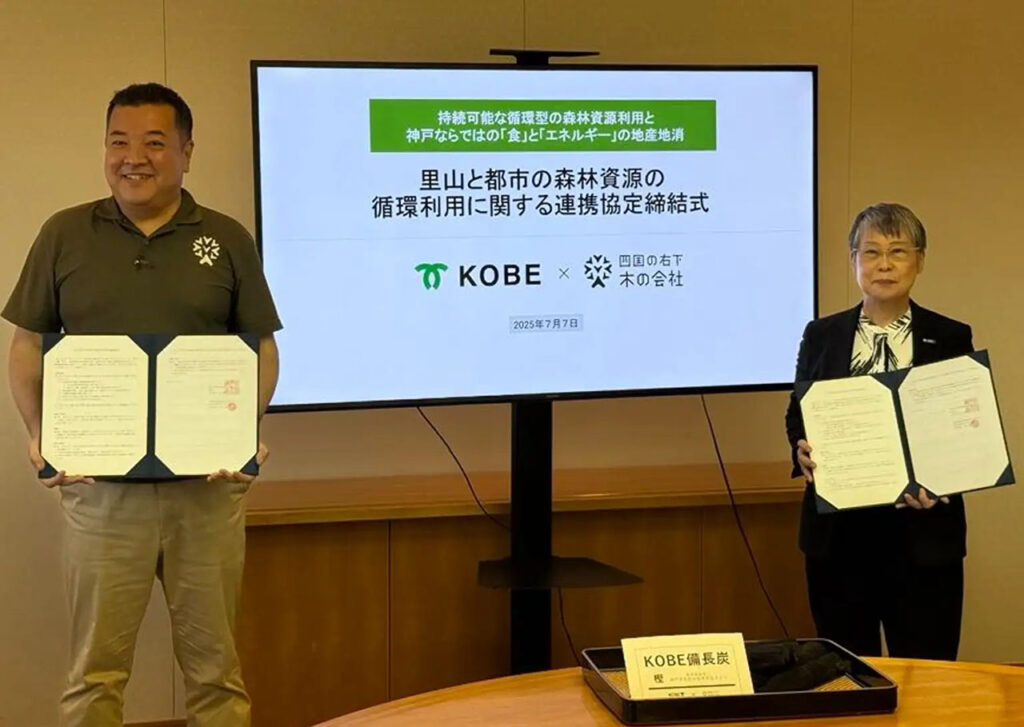Updated by Editorial Department of "Forest Circular Economy" on July 09, 2025, 10:00 AM JST
Editorial Board, Forest Circular Economy
Forestcircularity-editor
We aim to realize "Vision 2050: Japan Shines, Forest Circular Economy" promoted by the Platinum Forest Industry Initiative. We will disseminate ideas and initiatives to promote biomass chemistry, realize woody and lumbery communities, and encourage innovation in the forestry industry in order to fully utilize forest resources to decarbonize the economy, strengthen economic security, and create local communities.
Shikoku no Ugoshita Ki no Kaisha, a company based in Tokushima Prefecture that provides services to local governments through the use of recycling-oriented forestry and forest resources by Kori Kiri Rengyo, concluded an "Agreement on Recycling and Utilization of Forest Resources in Satoyama and Urban Areas" with Kobe City in July. The company aims to create a model for resource circulation within the region by utilizing the forestry technology that has been practiced in Tokushima Prefecture, as well as through technical exchange with Kobe City.
The purpose of this agreement is to promote sustainable management and cyclical use of forest resources in the satoyama and urban areas of Kobe City. The company will recycle trees cut from parks and street trees in Kobe City using the "kikori-moku rinryo" (lumbering forestry) technology inherited from the Edo period.

Activities based on the agreement are diverse. In Kobe City, the project will conduct a demonstration of "Jihi Jishoku" (cooking local foods using local firewood and charcoal) and examine the feasibility of creating a forest cycle based on lumbering in urban areas. The project also plans to communicate its knowledge of forests to the public and provide opportunities for hands-on experience.

Wisdom from the Edo period, modern technology, and cooperation between urban and rural areas. The fusion of these elements will expand the possibilities of a recycling model for forest utilization. The practice in Kobe City can serve as an advanced model case for creating new value through collaboration between urban and rural areas.